Collecting Watches And Cars: What’s The Same And What’s Different?
by GaryG
Cars and watches, watches and cars: they do seem to go together!
Scratch almost any watch lover and you’re going to find a car lover just under the surface. And, of course, there has been no shortage over the years of collaborations between watch and car brands such as Jaeger-LeCoultre with Aston Martin, Breitling with Bentley, and Ferrari with almost everyone (or so it seems).

All original: the author’s Ferrari 599 GTB Fiorano
Recently I had the pleasure of contributing a few thoughts to Michael Clerizo’s Wall Street Journal article on the similarities and differences between car and watch collecting, and that not only got me thinking more deeply about the topic but inspired me to reach out to one of my watch buddies for some of his perspectives.
“Enzo,” as we’ll call him here, has a killer collection of both independent and major-brand watches as well as an awe-inspiring selection of modern and vintage cars that includes a classic Ferrari 288 GTO – an object of desire if ever there were one.
What’s the same about watch and car collecting?
1. It’s about the people
Enzo: There is a certain irony in both watch and car collecting. One would expect collectors of such mechanical objects to be focused almost exclusively on the objects themselves, their design, function, and aesthetic. But, as mechanically amazing and achingly beautiful as some cars and watches are, collectors often say that it is the human aspect that they treasure the most. Who designed the item, who built it, who owned it previously? Who owns a similar item? Where can I meet them and share interest and passion? Such questions explain the enduring popularity of car shows, car rallies, watch shows, and even online watch forums.
GaryG: I couldn’t agree more! The opportunity to meet splendid, generous people who love sharing their collections and who will reward your interest with pearls of wisdom is right at the top of my list of appeals for both hobbies.

It’s all about the people: the author with Stephen Forsey (left)
2. Art and science
Enzo: Few objects combine excellence in both art and science the way that collector cars and watches do. Collectors admire not only the innovation and mechanical craftsmanship of an object (be it a car or a watch), but they also appreciate the design and the beauty of it. Together, and especially in limited numbers, they produce items of historic significance such as the Ferrari 250 GTO and the Philippe Dufour Duality.
GaryG: For me, there’s the additional dimension that these are not only works of art and mechanical marvels, but that these complex devices serve a practical purpose.
Passion or investment
Enzo: There can sometimes be a blurred line between passion and investment: watch collectors and car collectors, sooner or later, become quite familiar with it. They often simply buy what they love and pay no attention to potential investment value. But even the most ardent collectors find it hard to ignore the fact that certain cars and watches have the potential to provide either astronomic or catastrophic, investment returns. So, one thing that such collectors typically have in common is the desire to ignore investment value, but the compulsion to pay attention to it.
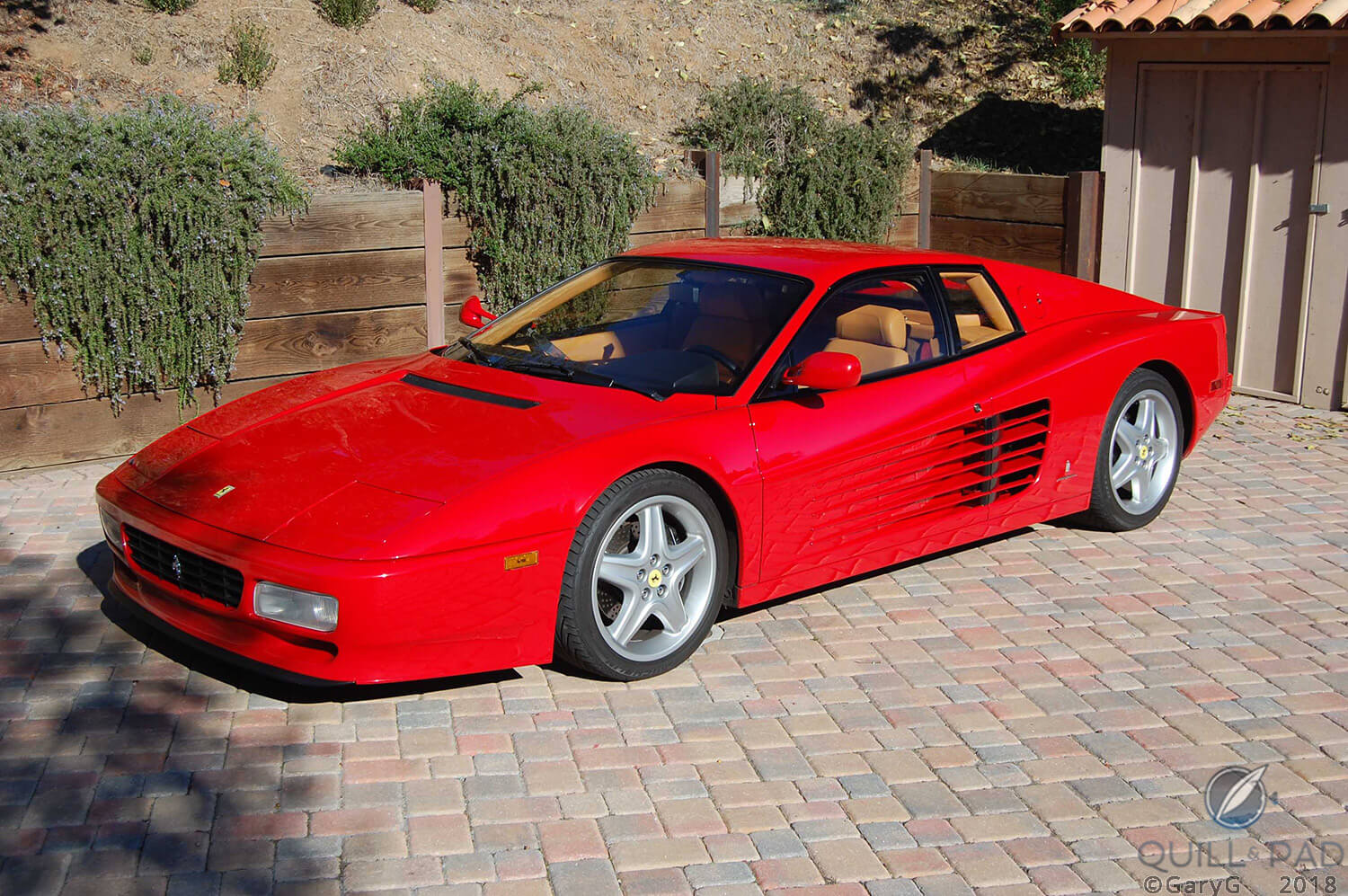
Didn’t get hurt, didn’t get rich: the author’s Ferrari 512TR, sold at a bargain price
GaryG: Tell me about it! I actually wrote an article a while ago about the collector’s fear of “getting hurt” in the event of a catastrophic drop in a watch’s value, especially as one moves up the ladder of value per watch (see Living Beyond Your Means As A Collector: How To Avoid Getting Hurt). With cars, I’ve had the related problem of seller’s remorse: it seems that I’ve sold pretty much every collectable car I’ve owned at the bottom of its price curve, and there’s also the non-buyer’s remorse of having passed on gems like the Ferrari 275 GTB 2!
Phases and tiers of collecting
Enzo: Watch collectors and car collectors seem to share a similar path then it comes to the evolution of their collecting. As children, well before they have to means to buy the objects of their desire, they typically develop great enthusiasm and appreciation for the objects. Later, they buy the “contentment” items – in other words, they buy relatively affordable items that are available to them. They cherish those first items and often keep them indefinitely.
But they frequently move on to the “achievement” items, the ones that are more expensive and rare. The ones for which they might have to apply to be on a waiting list of prospective buyers. There is a special satisfaction with owning such innovative, rare, and beautiful objects.
But, eventually, a certain degree of frustration often sets in. Why must the car or watch be that way? Can’t it be made differently? Can’t I be involved in the process? That is when many such collectors move on to the “involvement” items in their collections. Those are the ones that are typically made by hand in very limited numbers and provide the collector with a bespoke experience. The collector can get to know the creator of the object and be personally involved in the details of the design. Those items often provide the collector with a wonderful feeling of connection with both the creator and the item itself.
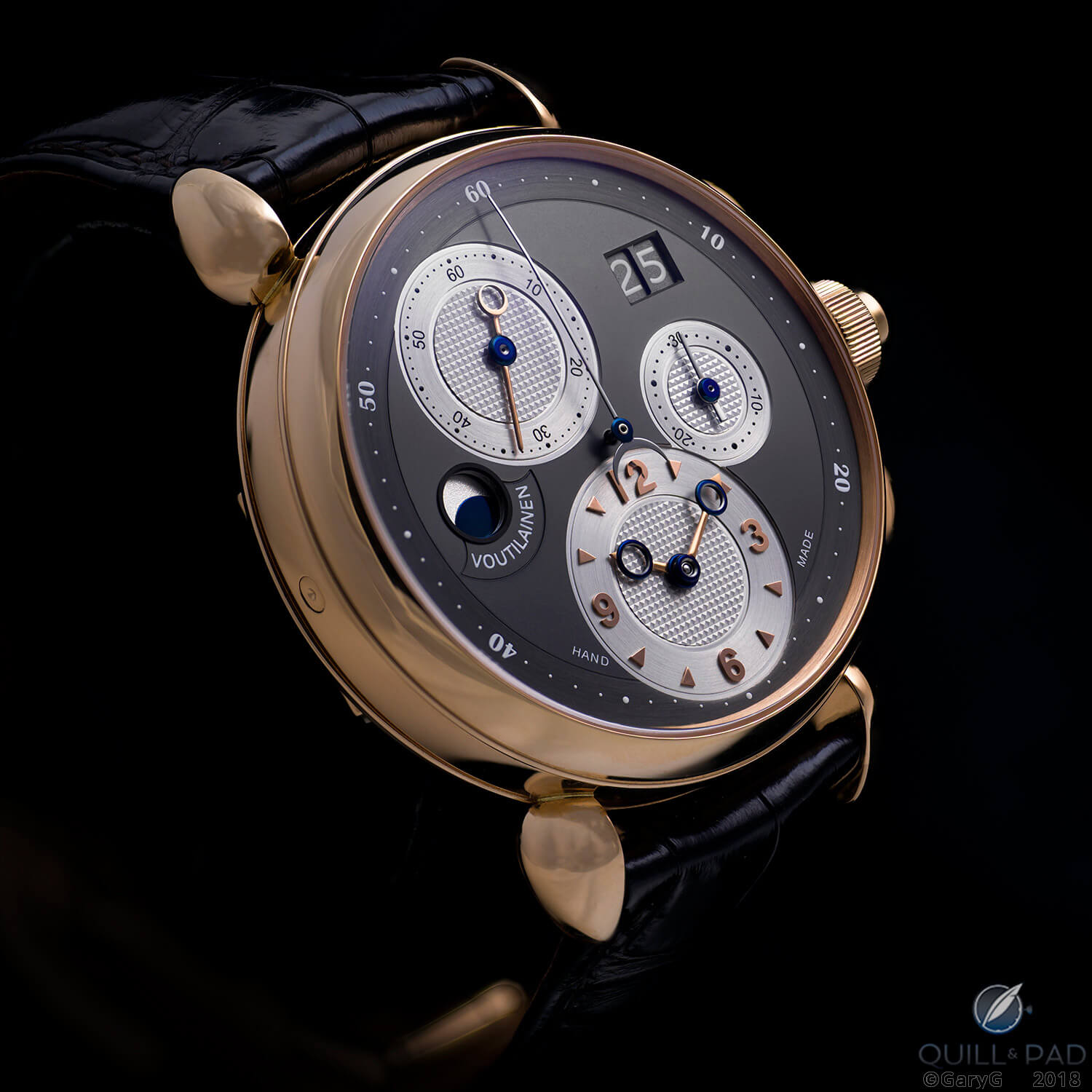
High involvement item: the author’s bespoke Kari Voutilainen chronograph
GaryG: I really like your contentment/achievement/involvement taxonomy; I hope you won’t mind if I borrow it and add it to the fun/patronage/foundational model I stole from our pal Terry!
I understand and generally agree with your view of collectors going through phases; that said, I don’t think I’ve ever completely left the earlier phases in your model. One of the great things about both of these types of collectibles is the ability to access different tiers of products and enjoy each throughout one’s collecting journey. For me a new steel Jaeger-LeCoultre Reverso can be just as satisfying as a complicated Patek Philippe, just as there are Ferrari 275 GTB four-cams and Fiat Jollys available to the car enthusiast.
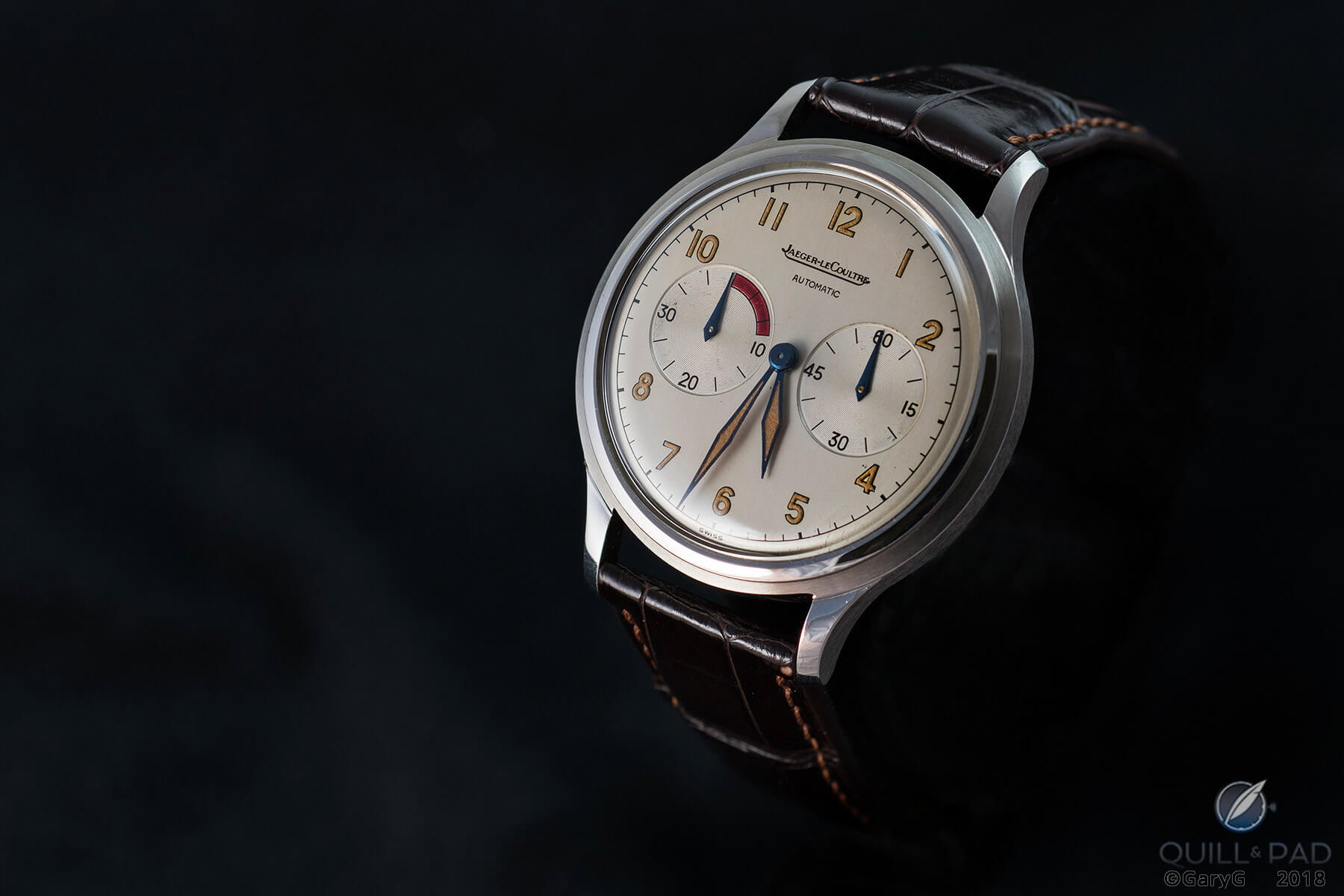
Late-stage contentment purchase: the author’s vintage Jaeger-LeCoultre Futurematic
I never got to the “involvement” level of commissioning a bespoke automobile, and so I tend to associate that sort of personal engagement more with watches. With watches – especially with independents, but even with brands like A. Lange & Söhne, where the creators are accessible – it is easy for me to form a bond with the person or people who conceived of, designed, and made my piece. As I’m fond of saying: “meet the maker, want the watch!”
5. Soul
Enzo: Very few watch or car collectors “need” the objects that they collect. A Swatch will keep time as well as or better than an haute de gamme mechanical timepiece, and a Ford Focus will provide excellent transportation at a fraction of the price of a collector car. So, the aficionado of both watches and cars is the person who sees those objects as much more than simply machines serving a purpose. In some cases, a car or a watch can almost have a “soul.” For example, Philippe Dufour has said that the finest handmade watches have something special that machine-made watches lack. And, handmade cars, like the Porsche 911s “reimagined” by Singer, also reflect so much of the craftsmanship that goes into them that they too have a “soul.”
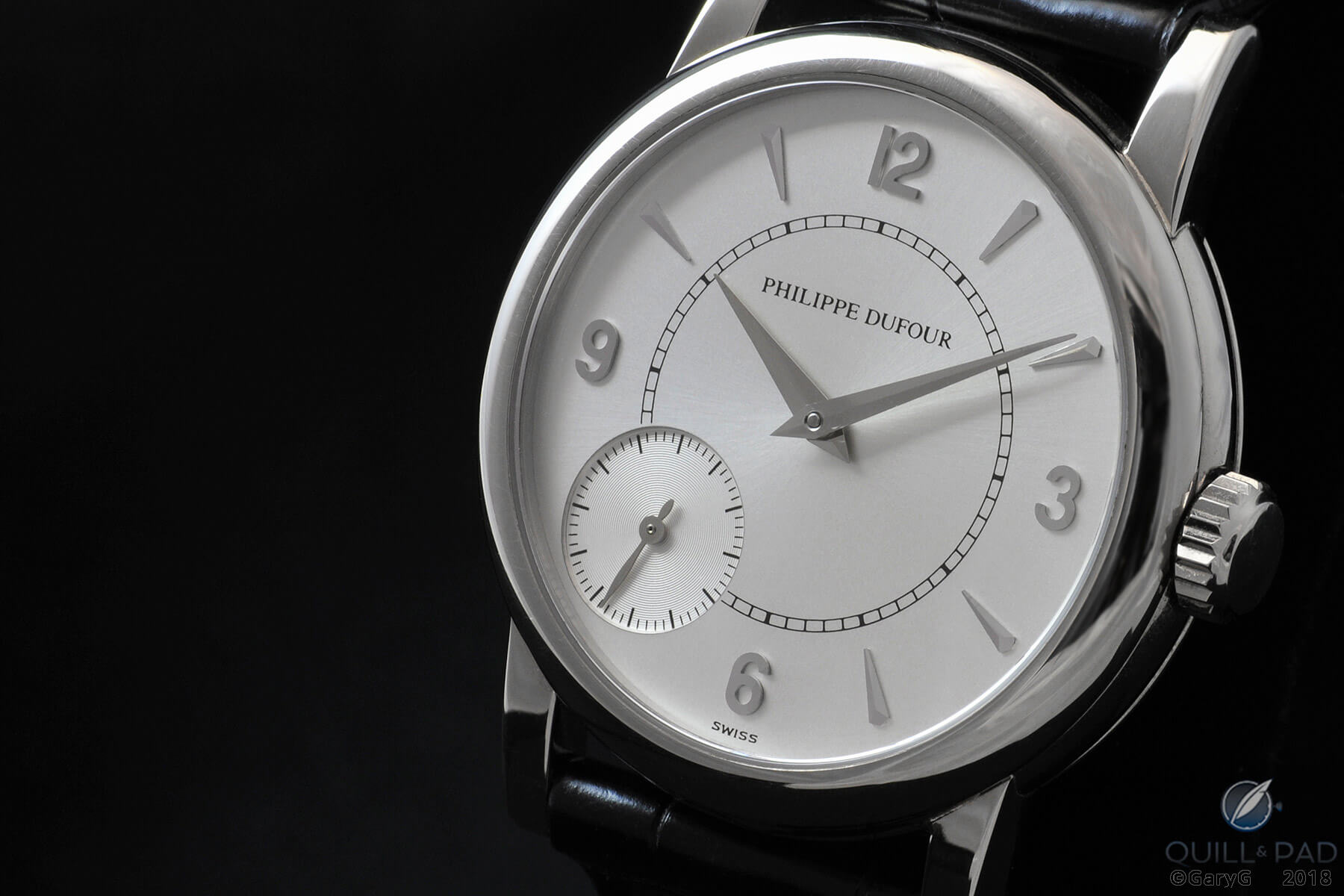
Soul you can touch: Philippe Dufour Duality
GaryG: And for me one of the great things about both cars and watches is the opportunity to sense that soul in a tactile way. It’s the ability to enjoy and reflect on the object itself through direct interaction, whether it’s feeling the click of a well-made manual winding watch or discovering the contours of your car as you apply and remove a coat of wax – these are objects that are meant to be touched as well as viewed.
At least for most owners! We both know that there are some collectors who have “safe queens” or “garage queens” even if both of us get the most enjoyment from wearing our watches and driving our cars.
What’s different about watch and car collecting?
1. Physics
Enzo: Car collectors, of course, are “moved” by their cars in more ways than one. The physical experience of driving the car provides a pleasure that a watch cannot. And the car enables its owner to literally get inside it and have the feeling of becoming a part of it. Whether driving a vintage car or a hypercar, the car collector gets a physical thrill that has very little to do with mere transportation.
GaryG: Yes, cars are much more visceral – while it’s nice to click the pushers on your chronograph, it’s nothing like dropping down the Corkscrew at Laguna Seca!
2. Sharing
Enzo: Simply put, you can’t take a passenger in your watch. Car collectors frequently share the pleasure of their cars with friends and family as passengers. And having passengers along for the ride can greatly enhance the experience for the driver.
GaryG: One of my great car – and watch – experiences was having the opportunity to take Laurent Ferrier, master watch creator and LeMans-placing endurance racer, on several hot laps of Laguna Seca, so I know what you mean!
I also love other aspects of car-related sharing. There’s really no good analogue in the watch world to the experiences of showing a car competitively at a concours or competing on the track – or even just doing timed laps with your pals. For me, both of those were central to the car collecting experience.
3. Maintenance and storage
Enzo: Watches can be enjoyed for long periods with relatively low maintenance costs. For example most watches, even those with grand complications, typically only need a service once every five years (or 43,800 hours). Car collectors would be thrilled if their cars only required a $3,000 service every 1.3 million miles, which is equivalent to 43,800 hours running at an average speed of 30 mph.
GaryG: The grind of maintaining cars, especially vintage ones, can be draining. And you don’t need a big garage for your watch collection, either!
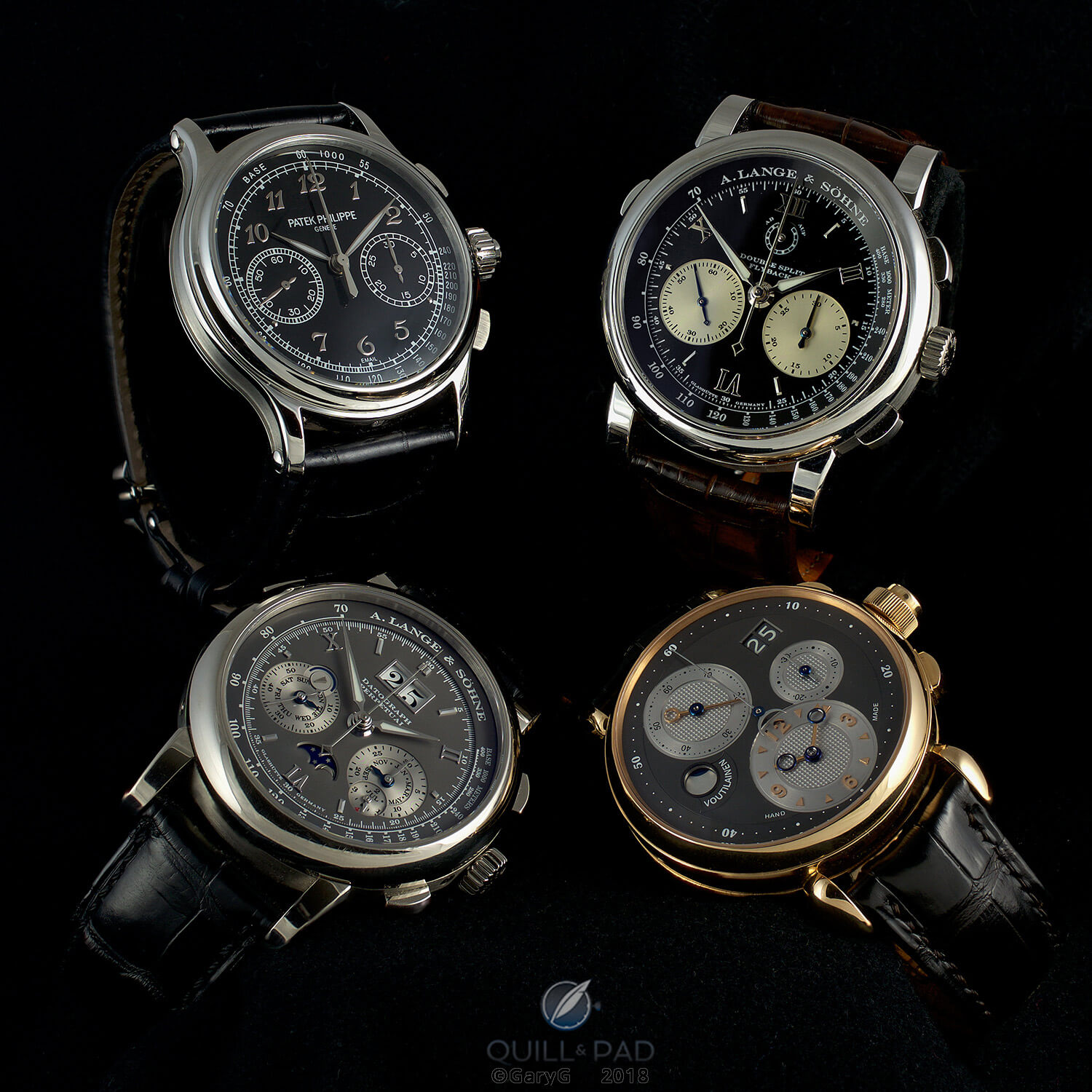
You don’t need a garage: a selection of chronographs from GaryG’s collection
4. Profile
Enzo: Watch collectors can very easily choose between enjoying their timepieces in total anonymity or displaying them for everyone to see. All that is required is a sleeve adjustment. Cars do not offer a low-profile option if they are to be driven on public roads. While some car collectors very much enjoy the high profile of their vehicles, for many it is a distinct drawback.
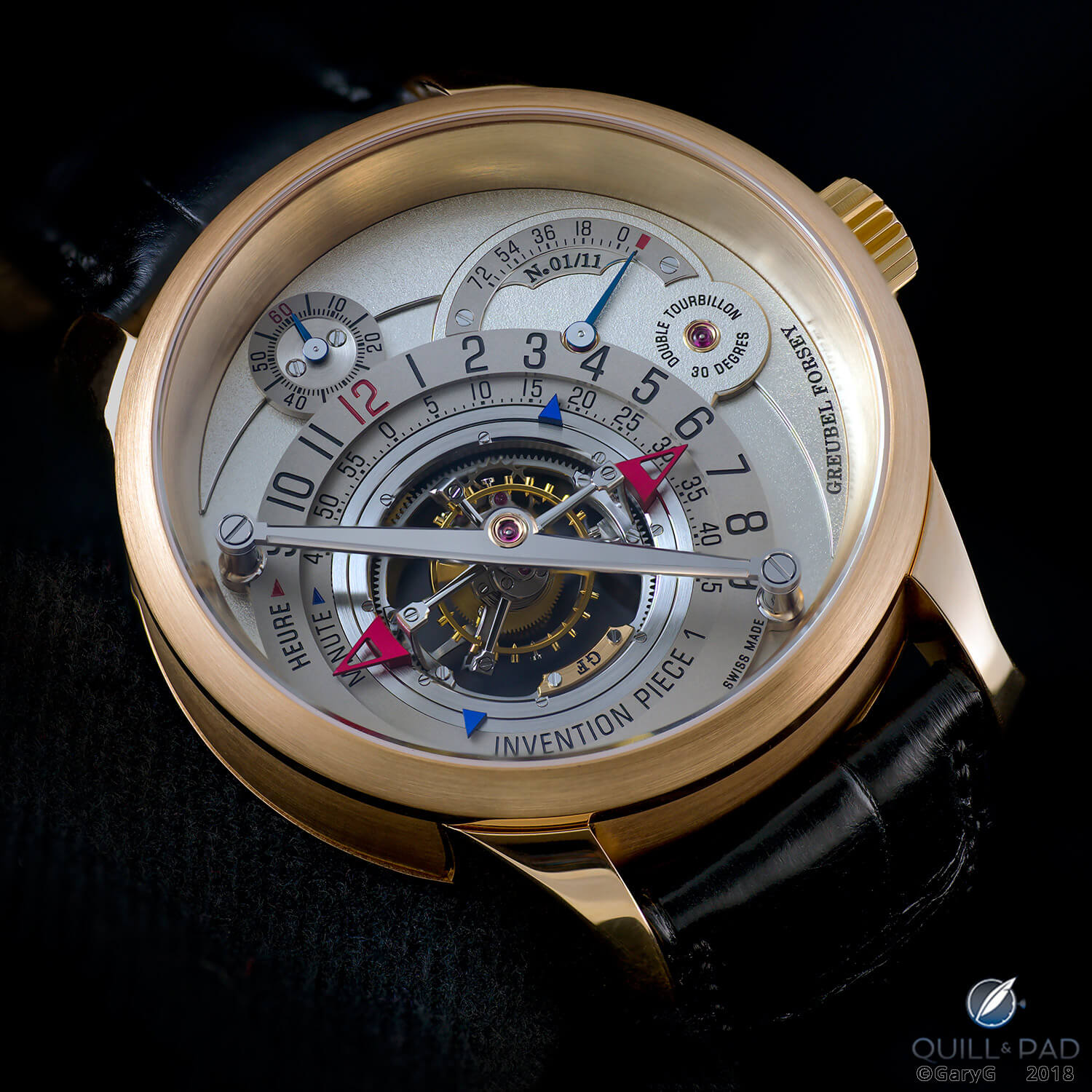
Keep it up your sleeve: Invention Piece 1 from Greubel Forsey
GaryG: At least with the collectors I hang with, with watches it’s more about “for those who know” whereas with cars it’s more about “putting on a show.”
5. Vintage value
GaryG: There’s one final distinction I’d draw, which relates to how collectors assess the desirability of vintage examples. As I see it the two disciplines have different views of the importance of originality vs. correctness.
With vintage watches, there is almost a fetish for a given watch to be made up of exactly the same parts it was when it left the manufacture, even if those parts are damaged or even corroded (as with “tropical” dials).
Of course I could go on about the impossibility of ensuring that a watch is all-original, but there are many examples of watches with “correct” replacement parts (e.g., matching/identical hands that were installed at a service along the way but that have a slightly different patina than the numerals on the dial, suggesting that they are not as old) whose value has suffered as a result.
By contrast, in the car world it has long been perfectly okay, even quite desirable, to restore vintage cars extensively with “correct” parts (either new-old stock or modern replications) to make them look as close to the day they left the factory as possible. In the Ferrari world, which I know fairly well, there are reports of restored vintage cars whose only original part is the small plate with the chassis serial number!
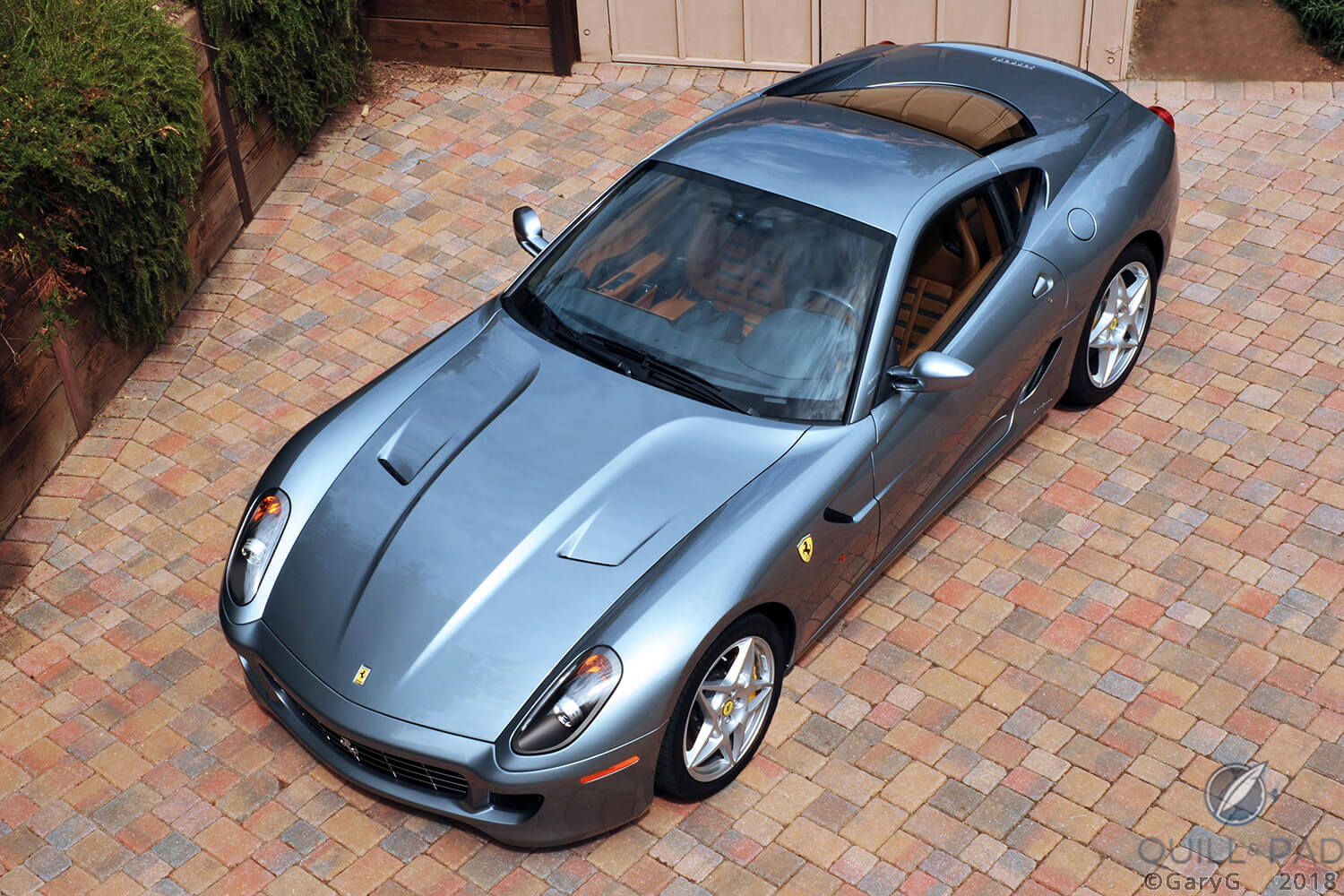
All original: the author’s Ferrari 599 GTB Fiorano
It was a real pleasure comparing perspectives with Enzo, and I hope that readers will take the opportunity to share your own thoughts and experiences with the related worlds of car and watch collecting in the comments section below.
Trackbacks & Pingbacks
-
[…] this longstanding relationship, as each inadvertently helps shape the other. The similarities and overlap between these two industries extend far beyond their obvious mutual reliance on complex and performance-oriented machines. The […]
-
[…] this longstanding relationship, as each inadvertently helps shape the other. The similarities and overlap between these two industries extend far beyond their obvious mutual reliance on complex and performance-oriented machines. The […]
-
[…] this longstanding relationship, as each inadvertently helps shape the other. The similarities and overlap between these two industries extend far beyond their obvious mutual reliance on complex and performance-oriented machines. The […]
Leave a Reply
Want to join the discussion?Feel free to contribute!



I thought the car came with the watch. You mean I have to buy the car? I’m going to have a helluva time getting my wife to go for that.
I’m tempted to tell you “what she doesn’t know won’t hurt her,” but it might end up hurting you!
Best, Gary
Personally, I have zero interest in cars other than as A-to-B machines – though I will, if forced, admit that in my youth I found some quite desirable!
Not every watch enthusiast is a car enthusiast, of course — all the better to focus on watches, I suppose!
Another “dirty” secret to collecting watches and cars is very well crafted firearms. An Ed Brown 1911 or an exquisitely engraved Holland & Holland over/under 12 gauge are also mechanical objects of passion and precision, but in today’s world it’s unfortunately a taboo subject to talk about.
Excellent point — and of course there’s the recent FP Journe watch with the Holland & Holland derived dial as a further tie-in. And, several of my watch pals are also very much into high-end knives — no shortage of what you appropriately term mechanical objects of passion and precision!
Excellent article. Very informative and great comparison. The closest I get to a Ferrari is the 488GTB as my laptop wallpaper. At least my few timepieces manage to console me somewhat ! 🙂
Gary, would love to see more pics of your Ferrari’s.
Thanks, Kunal! I’m sure that somewhere I have a few shots of some of my earlier Ferraris from the pre-Internet (gasp) age…
Now, that’s an excellent article!
High praise indeed, sir! Many thanks to you for inviting me to consider this topic in the first place and for publishing a few of my thoughts in your excellent piece — the good news for me is that the long-format approach here at Quill & Pad allows for deeper musing than the demands of WSJ and other publications of record.
Thanks for taking the time to comment and I’m very pleased you enjoyed it!
Best, Gary
The obession began at a young age with the cars, toys that is. But funny enough collecting watches is where the real trouble started, first a Daytona and now a small collection of useable watches. The cars came later and nothing particular, various models from square Bentley’s to racy GTR’s but what they hold in common, they are fascinating mechanical machines. And no my wife does not understand.